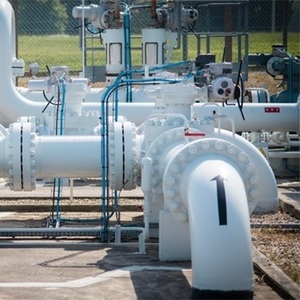Neste enables transport of renewable diesel by pipeline in Europe

April 12, 2022
BY Neste Corp.
Neste, Altens and TRAPIL have collaborated to enable the first-ever transport of renewable diesel (often also referred to as “HVO100”) by a pipeline in Europe. With a pipeline transport, the greenhouse gas emissions were reduced by 92 percent compared to conventional logistics by tanker trucks. The fuel transport of Neste-produced renewable diesel took place on March 28, 2022, between the harbor in Le Havre, located in northwestern France, and Gennevilliers, close to Paris. This made large volumes of renewable diesel available widely in the region, also in big cities such as Paris.
Altogether 3.5 million liters of Neste-produced renewable diesel was transported by TRAPIL via the pipeline to the depot in Gennevilliers, where Altens stores its products for the region. The distance between Le Havre and Gennevilliers is 192 km via the pipeline. The delivery took less than 48 hours to complete and replaced 110 truck deliveries. The pipeline transport of renewable diesel provides a lower-emission alternative to fuel logistics.
.
"The use of a pipeline in fuel logistics allows us to ensure the emissions from fuel logistics remain as low as possible. It also plays an essential role in the security of supply, and the greenhouse gas emissions are 35 percent smaller when compared with transports with electrified rail," says President Mohamed Bennama at Altens.
"We are very happy about this partnership enabling renewable diesel to be transported via pipeline for the first time in Europe. We share the common ambitions with Altens and TRAPIL, with which we were now able to take another step forward in our efforts to reduce the road transport emissions in France," says Peter Zonneveld, Vice President Sales Renewable Road Transportation Europe and APAC at Neste.
Renewable diesel, also known as HVO100
Neste MY Renewable Diesel is produced from 100 precent renewable raw materials. It helps reduce greenhouse gas (GHG) emissions by 90 percent* on the average when emissions over the fuel's life cycle are compared with fossil diesel. The renewable diesel is a “drop-in” fuel, fully compatible with all diesel engines, not requiring any modifications to the existing vehicles or fuel distribution infrastructures.
*) The methodology for calculating life cycle emissions and emissions reduction complies with the European Union’s Renewable Energy Directive II (2018/2001/EU)
Advertisement
Advertisement
Related Stories
The U.S. Energy Information Administration maintained its forecast for 2025 and 2026 biodiesel, renewable diesel and sustainable aviation fuel (SAF) production in its latest Short-Term Energy Outlook, released July 8.
XCF Global Inc. on July 10 shared its strategic plan to invest close to $1 billion in developing a network of SAF production facilities, expanding its U.S. footprint, and advancing its international growth strategy.
U.S. fuel ethanol capacity fell slightly in April, while biodiesel and renewable diesel capacity held steady, according to data released by the U.S. EIA on June 30. Feedstock consumption was down when compared to the previous month.
XCF Global Inc. on July 8 provided a production update on its flagship New Rise Reno facility, underscoring that the plant has successfully produced SAF, renewable diesel, and renewable naphtha during its initial ramp-up.
The USDA’s Risk Management Agency is implementing multiple changes to the Camelina pilot insurance program for the 2026 and succeeding crop years. The changes will expand coverage options and provide greater flexibility for producers.
Upcoming Events










